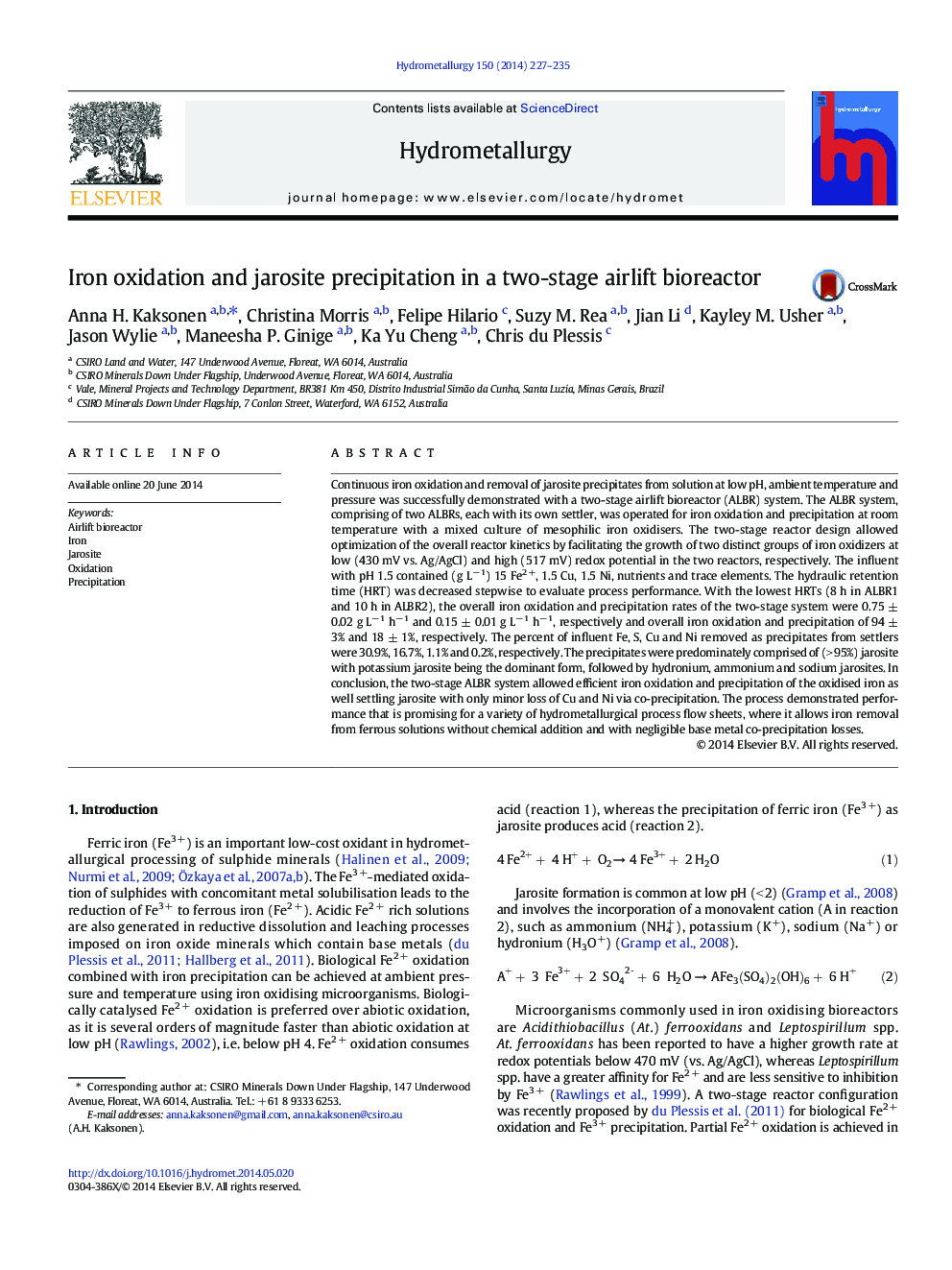| کد مقاله | کد نشریه | سال انتشار | مقاله انگلیسی | نسخه تمام متن |
|---|---|---|---|---|
| 212176 | 462035 | 2014 | 9 صفحه PDF | دانلود رایگان |
• Two stage airlift bioreactor facilitated efficient iron oxidation
• Iron precipitated mostly as jarosite
• Cu and Ni co-precipitation was low
• Jarosite had good settling and filtering characteristics
• The iron regeneration and removal process can be easily scaled up
Continuous iron oxidation and removal of jarosite precipitates from solution at low pH, ambient temperature and pressure was successfully demonstrated with a two-stage airlift bioreactor (ALBR) system. The ALBR system, comprising of two ALBRs, each with its own settler, was operated for iron oxidation and precipitation at room temperature with a mixed culture of mesophilic iron oxidisers. The two-stage reactor design allowed optimization of the overall reactor kinetics by facilitating the growth of two distinct groups of iron oxidizers at low (430 mV vs. Ag/AgCl) and high (517 mV) redox potential in the two reactors, respectively. The influent with pH 1.5 contained (g L− 1) 15 Fe2 +, 1.5 Cu, 1.5 Ni, nutrients and trace elements. The hydraulic retention time (HRT) was decreased stepwise to evaluate process performance. With the lowest HRTs (8 h in ALBR1 and 10 h in ALBR2), the overall iron oxidation and precipitation rates of the two-stage system were 0.75 ± 0.02 g L− 1 h− 1 and 0.15 ± 0.01 g L− 1 h− 1, respectively and overall iron oxidation and precipitation of 94 ± 3% and 18 ± 1%, respectively. The percent of influent Fe, S, Cu and Ni removed as precipitates from settlers were 30.9%, 16.7%, 1.1% and 0.2%, respectively. The precipitates were predominately comprised of (> 95%) jarosite with potassium jarosite being the dominant form, followed by hydronium, ammonium and sodium jarosites. In conclusion, the two-stage ALBR system allowed efficient iron oxidation and precipitation of the oxidised iron as well settling jarosite with only minor loss of Cu and Ni via co-precipitation. The process demonstrated performance that is promising for a variety of hydrometallurgical process flow sheets, where it allows iron removal from ferrous solutions without chemical addition and with negligible base metal co-precipitation losses.
Journal: Hydrometallurgy - Volume 150, December 2014, Pages 227–235
